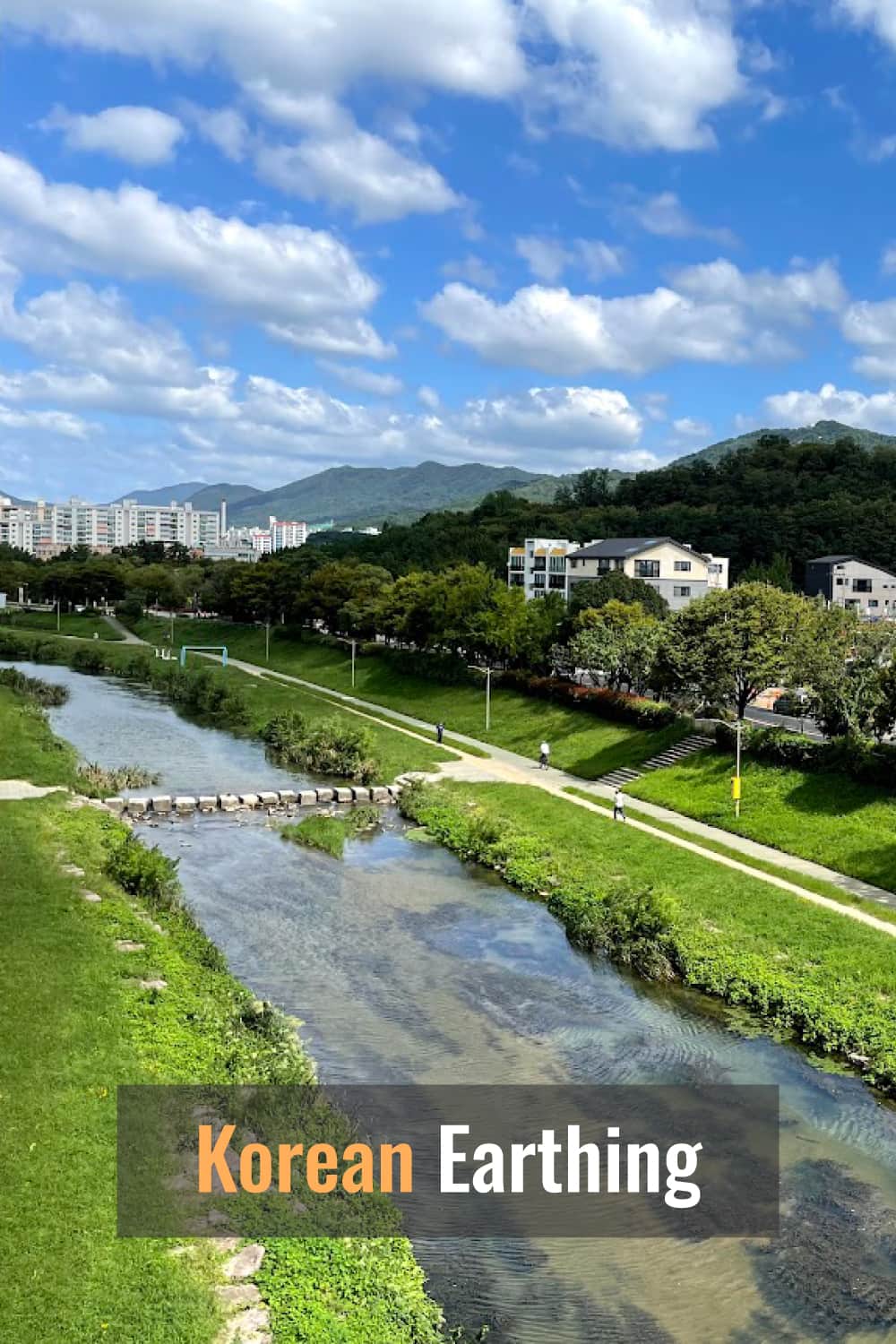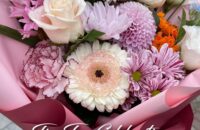Earthing has been around for a while in Korea. They even have a festival for it.
Earthing in the midst of serene temples nestled between mountains and secluded forest paths makes it a unique experience.
Find out how they do it in the Land of the Morning Calm!
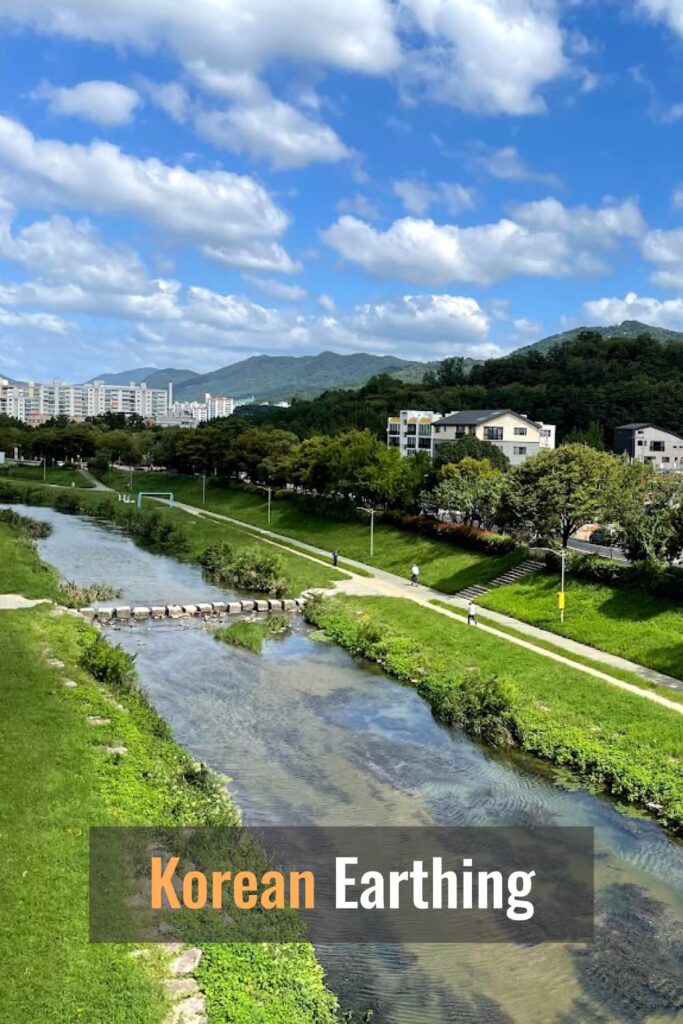
Quick Summary
- Earthing or Grounding refers to barefoot walking in Korean.
- Koreans do earthing on red clay trails.
- Locals enjoy forest bathing while grounding.
What is Korean Earthing?
Earthing or Grounding is “barefoot walking (맨발걷기)” in Korean. It also emphasizes direct physical contact with the surface of the Earth, but with a twist.
Earthing has been a part of daily life in the Peninsula for a while. Barefoot shiatsu courses studded with pebbles to create an acupressure effect are found in every park.
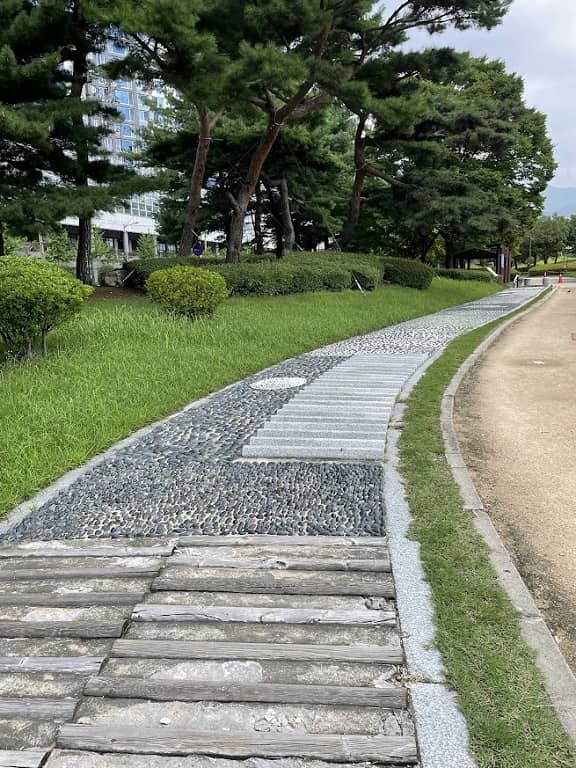
It has leveled up recently in the form of red clay trails.
You can enjoy it in neighborhood parks, or in the mountains while forest bathing at the same time.
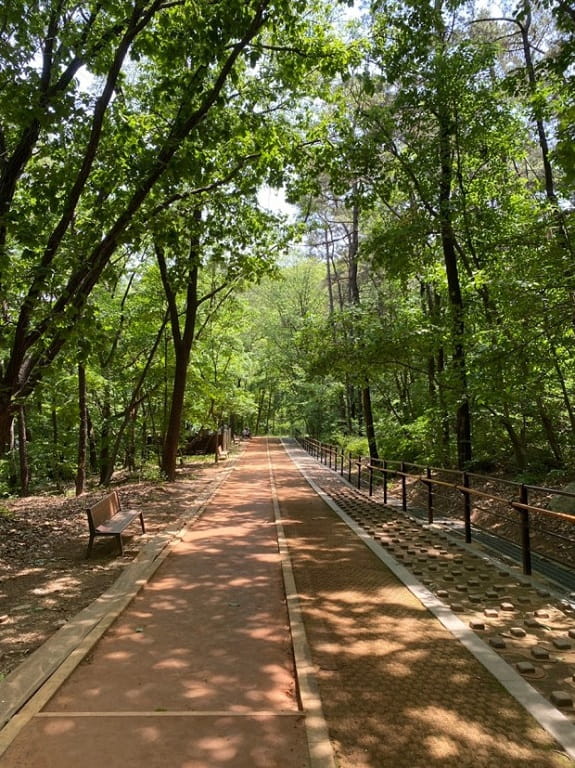
Earthing or grounding refers to the discovery that bodily contact with the Earth’s natural electric charge stabilizes the physiology at the deepest levels, reduces inflammation, pain, and stress, improves blood flow, energy, and sleep, and generates greater well-being.
Science Direct
- Koreans do earthing on red clay trails
- Locals enjoy forest bathing while grounding
- Koreans love earthing as it’s the easiest form of health care

Where can I try Korean Earthing?
Gyejoksan Mountain Red Clay Trail
Gyejoksan Red Clay Trail in Daejeon is the go-to-place for Korean earthing pilgrims.
Made with 20,000 tons of high-quality red clay in 2006 by a regional liquor company, Mackiss Company, more than 1 million people visit this 9-mile-long barefoot trail every year.
Red Clay Roads All Over Seoul
You can look up “황톳길” to find the nearest red clay road in Korea.
Notable ones in Seoul are:
- Yangjaecheon-ro, Gangnam-gu, Seoul
- Daemosan, Gangnam-gu, Seoul
- Amsa Ecological Park in Gangdong-gu, Seoul
- Ujangsan Park, Gangseo-gu, Seoul
- Jungnangcheon Embankment Walkway, Nowon-gu, Seoul
- Sole Ecological Park, Dobong-gu, Seoul
- Baebongsan, Dongdaemun-gu, Seoul
- Boramae Park, Dongjak-gu, Seoul
- Ansan, Seodaemun-gu, Seoul
- Eungbong Neighborhood Park, Seongdong-gu, Seoul
- Muhakbong Neighborhood Park, Seongdong-gu, Seoul
- Ogeum Park, Songpa-gu, Seoul
- Anyangcheon, Yangcheon-gu, Seoul
- Namsan Park, Jung-gu, Seoul
- Maebongsan, Jung-gu, Seoul
- Yongma Falls Park, Jungnang-gu, Seoul
Mungyeong Saejae Barefoot Festival
Mungyeong Saejae Barefoot Festival is held every year.
It celebrated its 18th anniversary this year. Koreans from all over the country gather every year to walk barefoot along the 4.3 mile (7km) red clay road between the 1st and 3rd gates of Mungyeong Saejae.

What Things Should I Keep In Mind While Earthing?
Korean earthing courses are composed of dry and/or wet red clay trails.
Be careful not to step on animal droppings or rocks to avoid injuries or tetanus on dry or unprotected trails.
In addition, as muddy red clay paths can get slippery, hold onto guardrails.
At the beginning and end of earthing trails in Korea, you’ll always find foot-washing facilities. Make sure to wash up at the end!

